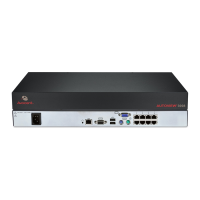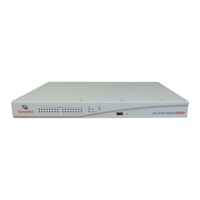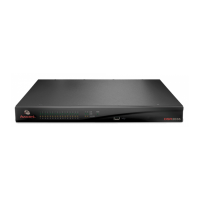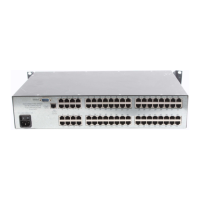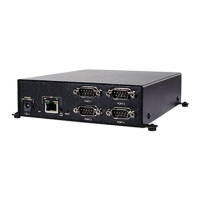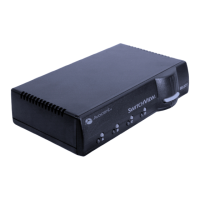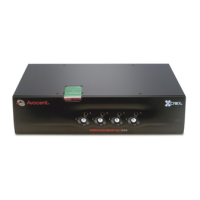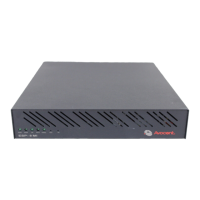8 APPENDICES
Appendix A: MIB SNMP Traps
The switch has the ability to send audit events to an SNMP Manager. The SNMP traps are defined in an
SNMP Trap MIB.
The Trap MIB file can be uploaded from the switch using the Save Trap MIB function. The uploaded Trap
MIB file can then be loaded into an SNMP Trap Receiver application.
This appendix describes the trap events that can be generated by the switch. Although care has been
taken to keep the information in this appendix up to date, the actual Trap MIB file contains the most
accurate trap information.
An SNMP manager can access MIB-II objects of the switch using the IPv4 or IPv6 protocols.
By design, the enterprise specific MIB objects within the switch cannot be accessed using SNMP.
The switch trap definitions use the structure described in the following Request For Comments (RFCs).
• RFC-1155-SMI - Describes the common structures and identification scheme for the definition
of management information for use with TCP/IP-based Internet.
• RFC-1212 - Describes the format for producing concise and descriptive MIB modules.
• RFC-1213-MIB - Describes the Internet standard MIB-II for use with network management
protocols in TCP/IP-based inter-networks.
• RFC-1215 - Describes the SNMP standardized traps and provides a means for defining
enterprise-specific traps. The specific objects reported by each trap are defined in the Trap
MIB file which is uploaded from the switch. The following table is a list of the generated trap
events.
TRAP EVENT TRAP NUMBER
User Authentication Failure 1
User Login 2
User Logout 3
Target Session Started 4
Target Session Stopped 5
Target Session Terminated 6
Traps 7-8 are Unused 7-8
User Added 9
User Deleted 10
User Modified 11
Reboot Started 12
Image File Upgrade Started 13
Image File Upgrade Results 14
IQ module Added 15
IQ module Removed 16
Table A.1 Generated Trap Events
Vertiv | Avocent® AutoView™ 2108/2216/3108/3216 Switch Installer/User Guide | 49
